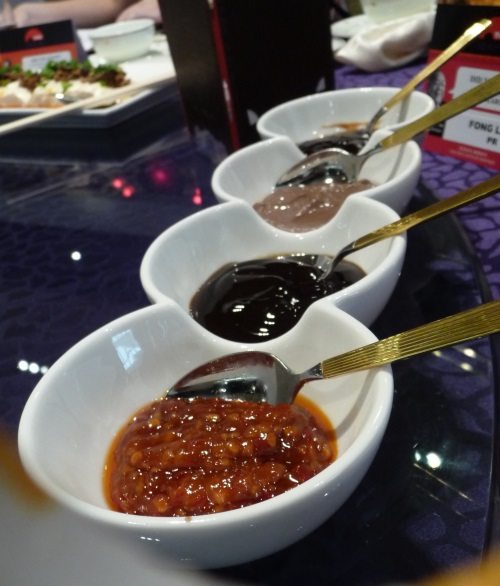Adjusting the calcium level and acidity could be the key to developing new better-tasting, more eye-appealing and creamier reduced-fat sauces, desserts and salad dressings that could be on the market soon, said researchers.
To date, a major problem with removing fat from these accompaniments is that in addition to reducing calories, it can negatively affect the flavor, appearance and texture, they said.
Based on recent research it may not be too long before new, improved, lower-fat foods appear in grocery stores, the researchers predicted.
Their study was part of the 247th National Meeting of the American Chemical Society from March 16 to 20, 2014.
Controlling pH, calcium content
In the laboratory study, the team reduced the fat content and, therefore, calories in a model white sauce from 10% to 2% without sacrificing the look and feel of the food.
“By controlling pH and calcium content, we are able to regulate the interactions among fat droplets,” said Bicheng Wu, a graduate student.
“This makes them stick together and form flocs, or clumps. We believe the water trapped inside these flocs makes the sauce seem fattier than it really is and preserves the look, feel and flavor.”
Wu explained that fat plays various roles in determining the overall sensory attributes of food products.
“It carries flavors, so cutting the fat content lessens the intensity of the flavor. The appearance, meaning the opacity or lightness, of a food mixture largely depends on light scattering by fat droplets, so high fat content gives a milky appearance to a sauce or dressing.”
She added that high fat content is also related to the thick, smooth and creamy feel in the mouth of many products, such as pudding, due to the effect of fat droplets on how the liquid flows.
Fullness factor
Yet another problem with cutting the fat content is that it does not make people feel as full, said D. Julian McClements, Ph.D., who is the leader of the University of Massachusetts Amherst research team that conducted the study.
“Due to the high calorie count in fat and how the body digests it, fat also affects the feeling of satiety.”
“Often we see people reacting to the texture of our low-fat sauce sample even before they taste it,” said Wu.
“They say, ‘Wow! No way it’s only 2 percent fat. It looks like custard! Can I try it?”’
More tests ahead
McClements said that the team soon plans extensive taste and smell tests.
“Then we will be able to adjust the composition and incorporate other seasoning ingredients into the foods,” he said.
“Since this fat reduction is easy for us now, and the fact that our new products contain healthy ingredients that can be used in a wide range of products means there’s a great potential to reach the market in the near future.”
The study was supported by ConAgra Foods.










